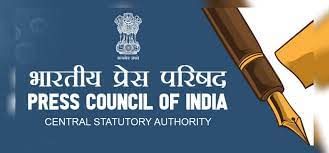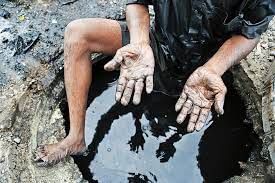UPSC Daily Current Affairs- 2nd March 2023 | Current Affairs & Hindu Analysis: Daily, Weekly & Monthly PDF Download
GS-I
Akbar

Why in News?
Recently, actor Naseeruddin Shah was in news for praising Akbar’s ‘broad-mindedness and tolerance of all faiths.’
About Akbar :
- Dynasty:Timurid; Mughal
- Predecessor:Humayun
- Successor:Jahangir
- Biography:Akbarnama; Ain-i-Akbari
- Mausoleum:Sikandra, Agra
- He was the son of Nasiruddin Humayun and succeeded him as the emperor in the year 1556.
- He was born in Umarkot (which is now in Sindh province, Pakistan), and died, in Agra, India.
- He extended Mughal power over most of the Indian subcontinent and he reigned from 1556 to 1605.
- He established a centralized system of administration and adopted a policy of marriage alliance and diplomacy.
- Biography by : Abul Fazal
Administration
- The Emperor himself was the supreme governor of the empire.
- He retained ultimate judicial, legislative, and administrative power above anyone else.
- He introduced the Mansabdari system to effectively organize the Military.
- He was assisted inefficient governance by several ministers –
- Vakil-chief adviser to the King over all matters
- Diwan-minister in charge of finance
- Sadar-i-sadur– religious advisor to the King
- Mir Bakshi-the one who maintained all records
- Daroga-i-Dak Chowki – to oversee proper enforcement of law
- Muhtasib– to oversee the postal department.
Revenue System:
- The land was divided into four classes according to their productivity – Polaj, Parauti, Chachar, and Banjar.
- Polaj – Throughout the empire, Polaj was the ideal and best type of land. This land was always cultivated and was never left fallow.
- Parauti – This was the land that was temporarily kept out of cultivation in order to regain its fertility.
- Chachar – Chachar was a type of land that was allowed to lie fallow for three or four years before being cultivated again.
- Banjar – Banjar was the worst type of land that had been left uncultivated for five years or more.
- Bigha was the unit of land measurement.
- Land revenue was paid either in cash or in kind.
- Dahsala system of land taxation was introduced under the reign of Akbar.
Judicial Reforms:
- Hindu customs and laws were referred to in the case of Hindu subjects for the first time during Akbar’s reign.
- The Emperor was the highest authority in Law and the power to give capital punishment rested solely with him.
- The major social reform introduced by Akbar was the abolition of the Pilgrimage Tax for Hindus in 1563 as well as the Jazia tax.
- He discouraged child marriage and encouraged widow remarriage.
- He craved religious unity for his people and with that vision founded the sect Din-i-Ilahi (Faith of the Divine).
Architecture and Culture
- Among the architectural marvels commissioned during his rule are the Agra Fort (1565–1574), the town of Fatehpur Sikri (1569–1574) with its beautiful Jami Masjid and Buland Darwaza, Humayun’s Tomb (1565-1572), Ajmer Fort (1563-1573), Lahore Fort (1586-1618) and Allahabad Fort (1583-1584).
- Akbar’s Nava Ratnas or the Nine Gems : Abul Fazel, Faizi, Mian Tansen, Birbal, Raja Todar Mal, Raja Man Singh, Abdul Rahim Khan-I-Khana , Fakir Aziao-Din and Mullah Do Piaza.
Important Conquests:
- He defeated Hemu in the second battle of Panipat in 1556.
He consolidated his supremacy over most of north and central India and then over Rajputana by 1576 with the Battle of Haldighati. - Akbar brought in Gujarat (1584), Kabul (1585), Kashmir (1586-87), Sindh (1591), Bengal (1592), and Kandahar (1595) within the Mughal territory.
- The Mughal army led by General Mir Mausam also conquered parts of Baluchistan around Quetta and Makran by 1595.
- By 1600, Akbar had captured Burhanpur, Asirgarh Fort, and Khandesh in Deccan.
Source: THE INDIAN EXPRESS
Alux and Mayan Civilization

Why in News?
Recently, the Mexican President claimed a photo of a tree as a figure from Mayan mythology, as depicted in a historic sculpture from the Mayan civilization.
About Alux:
- According to Mayan mythology, aluxes are small, mischievous creatures that inhabit forests and fields and like to play tricks on people, like hiding things.
- It is believed to live somewhere around the Yucatan peninsula.
- They are typically invisible to humans, although legend has it they are capable of becoming visible when they want to be mischievous or are feeling playful.
- They are also quick in their movements, and some have even been said to have the body parts of other animals including iguanas, deer, macaws, or coati. Other physical descriptions are similar to those of sprites, spiritual fairy-like creatures.
- In some regions, Yucatan locals say Aluxes can appear in more frightening forms, including dark shadows or shapes with glowing red eyes.
- If Aluxes are disrespected or disregarded, they may take on menacing forms to frighten the locals.
About the Mayan Civilization:
- The Maya are indigenous people of Mexico and Central America.
- They have continuously inhabited the lands comprising modern-day Yucatan, Quintana Roo, Campeche, Tabasco, and Chiapas in Mexico and southward through Guatemala, Belize, El Salvador, and Honduras.
- The designation Maya comes from the ancient Yucatan city of Mayapan, the last capital of the Mayan Kingdom in the Post-Classic Period.
- The Maya believed deeply in the cyclical nature of life – nothing was ever `born’ and nothing ever `died’ – and this belief inspired their view of the gods and the cosmos.
- The great pyramids which characterize so many Mayan sites are replicas of the great mountain of the gods known as the Witzob.
- The cyclical nature of human existence is mirrored in the famous Maya calendar.
Maya Calendar
- There are two calendars at work simultaneously in the Maya system: the Haab, or civil calendar of 365 days in an 18-month period of 20 days each, and the Tzolkin, or sacred calendar, of 260 days divided into three groups of months of 20 days.
- The Haab and the Tzolkin work together, like gears interlocking in a machine, to create what is known as the Calendar Round but cannot account for dates farther in the future than 52 days.
Source: THE INDIAN EXPRESS
GS-II
Raisina Dialogue

Why in News?
Italian PM Giorgia Meloni to be chief guest at 8th Raisina Dialogue to be held soon.
About The Raisina Dialogue:
- The Raisina Dialogue is India’s premier conference on geopolitics and geoeconomics committed to addressing the most challenging issues facing the global community
- The conference is hosted by the Observer Research Foundation in partnership with the Ministry of External Affairs, Government of India. This effort is supported by a number of institutions, organizations, and individuals, who are committed to the mission of the conference.
- Every year, leaders in politics, business, media, and civil society converge in New Delhi to discuss the state of the world and explore opportunities for cooperation on a wide range of contemporary matters.
- The Dialogue is structured as a multi-stakeholder, cross-sectoral discussion, involving heads of state, cabinet ministers, and local government officials, who are joined by thought leaders from the private sector, media, and academia.
Source: THE HINDU
What is the Press Council of India (PCI)?

Why in News?
The Press Council of India (PCI) recently issued an advisory to the print media on ‘paid news’.
About the Press Council of India (PCI):
- The PCI was first set up in 1966 by the parliament on the recommendations of the First Press Commission under the chairmanship of Justice J.R Mudholkar.
- The present council functions under the Press Council Act 1978.
- It is a statutory, quasi-judicial body that acts as a watchdog of the press in India.
- Composition:
- It consists of a Chairman and 28 other members.
- The Chairman is nominated by a committee consisting of Chairman of Rajya Sabha, the Speaker of Lok Sabha, and one representative of the council
- The Chairman, by convention, has been a retired judge of the Supreme Court.
- The term of the Chairman and the members of the Council is 3 years.
- Primary Function: To check the media practice and to keep an eye on the freedom of the press.
- Other Functions:
- Helping newspapers to maintain their independence;
- Building up a code of conduct for journalists and newspapers according to high professional standards;
- Reviewing any development which is likely to restrict the supply and dissemination of news of public interest and importance;
- Reviewing such cases where assistance has been received by any newspaper or news agency in India from foreign sources, as referred to it by the Central Government;
- Providing facilities for the proper education and training of persons in the profession of journalism;
- Studying developments that may lead towards monopoly or concentration of ownership of newspapers and suggest remedies;
- Powers:
- It adjudicates the complaints either against the Press for violation of journalistic ethics or by the Press for interference with its freedom.
- The council shall have the same powers throughout India as are vested in a Civil court while trying a suit under the Code of Civil Procedure, 1908.
- Every inquiry held by the council shall be deemed to be a judicial proceeding under sections 193 and 228 of the Indian Penal Code.
- The decision of the council is final and can not be challenged in any court of law.
Source: The Hindu
Foreign Contribution Regulation Act

Why in News?
Recently, the Central government of India suspended the Foreign Contribution Regulation Act (FCRA) licence of the Centre for Policy Research (CPR).
About Foreign Contribution Regulation Act:
- This act was enacted during the Emergency in 1976 amid apprehensions that foreign powers were interfering in India’s affairs by pumping money into the country through independent organisations.
- The FCRA requires every person or NGO seeking to receive foreign donations to be
- Registered under the Act
- To open a bank account for the receipt of foreign funds in the State Bank of India, Delhi.
- To utilise those funds only for the purpose for which they have been received and as stipulated in the Act.
Eligibility criteria for the registration
- These registrations are granted to individuals or associations that have definite cultural, economic, educational, religious, and social programmes.
- The applicant should not be fictitious or benami; and should not have been prosecuted or convicted for indulging in activities aimed at conversion through inducement or force, either directly or indirectly, from one religious faith to another.
- Once granted, FCRA registration is valid for five years. NGOs are expected to apply for renewal within six months of the date of expiry of registration.
- Registration can be cancelled if an inquiry finds a false statement in the application
- Once the registration of an NGO is cancelled, it is not eligible for re-registration for three years.
- The ministry also has the power to suspend an NGO’s registration for 180 days pending inquiry and can freeze its funds.
- All orders of the government can be challenged in the High Court.
Source: Indian Express
Manual Scavenging in India
Why in News?
Supreme Court has recently directed government to file report on steps taken to end manual scavenging.
About Manual Scavenging:
- Manual scavenging refers to the practice of manually cleaning, carrying, disposing or handling in any manner, human excreta or any kind of dry or wet waste from insanitary latrines, open drains, septic tanks or other similar places.
- Manual scavenging is a dehumanizing practice that involves the use of basic and often unsafe tools like brooms, buckets, and baskets, which can lead to serious health hazards, injuries, and even death.
Manual scavenging in India: A sad story
- As per 2011 Census of India, there were over 740,000 households in the country where manual scavenging was still being practiced.
- This practice is often associated with the caste system in India, where people from lower castes, such as Dalits, are forced to engage in manual scavenging.
- According to the National Commission for Safai Karamcharis, a total of 482 manual scavengers died while cleaning sewers and septic tanks across India between 2016 and 2019.
- The Safai Karamchari Andolan, an advocacy group working to eradicate manual scavenging, estimates that there are still around 1.8 million manual scavengers in India.
- Many manual scavengers suffer from various health problems, including skin diseases, respiratory issues, and even death due to exposure to toxic fumes in septic tanks and sewer lines.
- A total of 233 people died due to accidents while undertaking hazardous cleaning of sewer and septic tanks from 2019 to 2022.
- Haryana had the highest number of deaths at 13, followed by Maharashtra with 12 and Tamil Nadu with 10.
- The practice of manual scavenging is mostly carried out by people from lower castes, such as Dalits, and this perpetuates the cycle of caste-based discrimination and social exclusion.
Reasons for Persistence of Manual Scavenging:
There were many reasons why the programme proved to be ineffective:
- Issue of Women: Most of the provisions for the rehabilitation under the scheme were not gender sensitive and directed towards men, although around 95-98% of the individuals involved in manual scavenging are women.
- Issue of Loan: The key provision of the scheme was a loan provision with a subsidy.
- Giving loans to the vulnerable communities, which were compelled to take up manual scavenging, rooted in a caste system and face social, political and economic exclusion is not a sustainable solution.
- Defaulters: Most of the loans under the Scheme for the Rehabilitation of Manual Scavengers (SRMS) were issued through banks with 50% of a subsidy.
- However, most of the subsidy was spent on paying the chargeable interest to the bank and those not able to pay it become “defaulters”.
- Rural Areas: According to SRMS Survey, around 60% of those involved in manual scavenging are in rural areas (larger villages and settlements).
- However, the focus of the scheme was on urban areas.
- Caste aspect: Government programmes have emphasised the financial aspect of rehabilitation and failed to address the caste-based oppression and related social conditions that have perpetuated this practice for centuries.
- Corruption: SRMS survey found that in district of Madhya Pradesh there were more than 165 women involved in manual scavenging but not a single name was included in the list of beneficiaries.
- Only districts with more than 302 women were included.
- only 10% of those involved in manual scavenging were actually included in the list.
- This resulted in many eligible individuals not reaching the benefits and those not eligible benefiting of the scheme.
Challenges of stopping manual scavenging:
- Social stigma: Manual scavenging has been associated with certain castes and communities, which has resulted in social discrimination and stigmatization of people engaged in manual scavenging.
- Lack of awareness: There is a lack of awareness among people about the health hazards associated with manual scavenging, which has resulted in people continuing to engage in this practice.
- Insufficient implementation: While laws and regulations have been put in place to prohibit manual scavenging, their implementation has been poor in many areas.
- Poor infrastructure: In many parts of India, there is a lack of proper sanitation infrastructure, which has resulted in people engaging in manual scavenging to clean the sewage.
- Inadequate rehabilitation measures: Many of the rehabilitation schemes have not been implemented properly, which has resulted in people not being able to find alternative sources of livelihood.
Steps taken by the government to curb manual scavenging:
- The government has formulated the NAMASTE scheme or National Action Plan for Mechanised Sanitation Ecosystem in an effort to stop deaths due to hazardous cleaning of sewers and septic tanks,
- The Employment of Manual Scavengers and Construction of Dry Latrines (Prohibition) Act, 1993 was introduced to ban manual scavenging.
- The Prohibition of Employment as Manual Scavengers and Their Rehabilitation Act, 2013 to further reinforce the ban and to provide for the rehabilitation of people employed as manual scavengers.
- In 2014, the Supreme Court directed the government to take several measures including:
- One-time cash assistance to people employed as manual scavengers
- Houses for manual scavengers
- Training in livelihood skills for at least one member of their families
- Concessional loans to prop them up financially and find an occupation
- Payment of ?10 lakh in compensation in the case of sewer deaths
- Despite the legal prohibition and government efforts to eradicate manual scavenging, the practice still persists in various parts of the country.
Way Forward:
- Socio-Economic Rehabilitation: A viable and formidable rehabilitation scheme should be developed which must include provision for social and economic rehabilitation of families liberated from scavenging.
- Providing adequate provision for compensation, education, accommodation and employment
- Gender Aspect: All rehabilitation schemes and programmes must be totally redesigned for the women that make up 98% of the workforce and are enslaved by this exploitative tradition.
- Government Appointments: In the appointment of workers, assistants and cooks in ICDS (Anganwadi) centres, only women from Dalit communities should be appointed.
- Among Dalits, the manual scavenging community should be preferred.
- Dalit Muslim and Dalit Christian Manual Scavengers: Non-scheduled castes such as Dalit Muslim and Dalit Christian communities engaged in manual scavenging should receive similar facilities and security to manual scavengers from scheduled castes.
- Indian Railway: The Indian Railway is the largest institution in the country that use dry latrines.
- The Railway Ministry must immediately prohibit this practice and for the next three years present progress reports in every session of Parliament.
- This, so that the Government of India can ensure total abolishment of scavenging in Indian Railway in stipulated time.
- Priority to Manual Scavengers Community: Inclusion of manual scavengers’ families and those families who have left manual scavenging in the priority list of all government schemes and entailment.
- Adopting Technology to End Manual Scavenging: It is not going to be possible to eliminate manual scavenging unless we create the right technologies.
- There are reportedly about 15 innovations developed across the country to replace manual scavenging.
- While technology is considered essential to end this scourge.
GS-III
Aztec humming birds

Why in News?
Recently, Aztec hummingbirds were spotted in India.
About Aztec hummingbirds:
- The name means a ray of the sun.
- It is a hummingbird native to the American continent.
- It is also known as the Aztec hummingbird, there exist 350 species of this bird.
- They can beat their wings up to 50 times per second creating a humming sound.
- They can fly backward.
- They prefer Tubular flowers that are bright red or orange (such as lantana and rhododendron).
- They have very long hand bones but very short arm bones that are connected to the body through flexible ball-and-socket joints.
- These joints allow the wings to rotate after each half-stroke, permitting backward flight.
- The purple sunbird, one of its types is commonly found in India.
- They have the highest metabolic rate (calories burnt per minute) among vertebrates.
Source: THE HINDU
Panna Tiger Reserve (PTR)

Why in News?
Recently, as part of the Ken-Betwa Link Project (KBLP), a comprehensive Integrated Landscape Management Plan (ILMP) has been prepared for the conservation of wildlife and biodiversity in the Panna Tiger Reserve (PTR) & surrounding areas.
Key facts about the Panna Tiger Reserve
- Panna Tiger Reserve is a critical tiger habitat located in Vindhya Hill in northern Madhya Pradesh.
- The dominating vegetation type is dry deciduous forest interspread with grassland
- In the north, it is surrounded by teak forest & in the east, it is surrounded by Teak-Kardhai mixed forest.
- The North East-South West, running Vindhya Hill ranges link the eastern and western populations of wild animals.
- Fauna: Leopard, Wild dog, wolf, Hyaena, Sloth bear etc.
What is Ken-Betwa Link Project?
- Under this, the transfer of excess water from the River Ken to the Betwa basin through the use of a concrete canal is proposed.
- It is the first project under the National Perspective Plan for the interlinking of rivers.
- It aims to provide irrigation to the Bundelkhand region, which is one of the worst drought-affected areas in India.
- A Tripartite Memorandum of Understanding was signed between the Centre and the governments of UP and MP for the project.
- Implementing Agency: A Special Purpose Vehicle (SPV) called Ken-Betwa Link Project Authority (KBLPA) will be set up to implement the project.
Source: PIB
|
38 videos|5293 docs|1118 tests
|
FAQs on UPSC Daily Current Affairs- 2nd March 2023 - Current Affairs & Hindu Analysis: Daily, Weekly & Monthly
| 1. What are the three general studies papers in the UPSC exam? |  |
| 2. What is the significance of GS-I in the UPSC exam? |  |
| 3. What does GS-II cover in the UPSC exam? |  |
| 4. What is the scope of GS-III in the UPSC exam? |  |
| 5. How should I prepare for the general studies papers in the UPSC exam? |  |

















